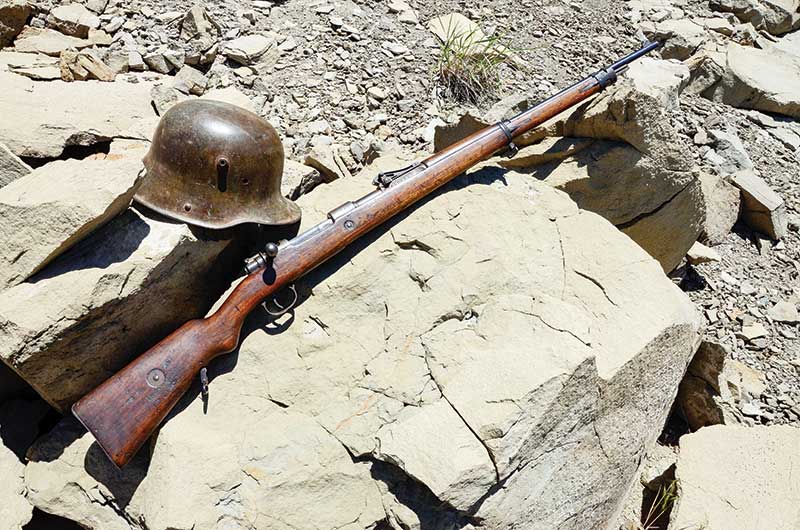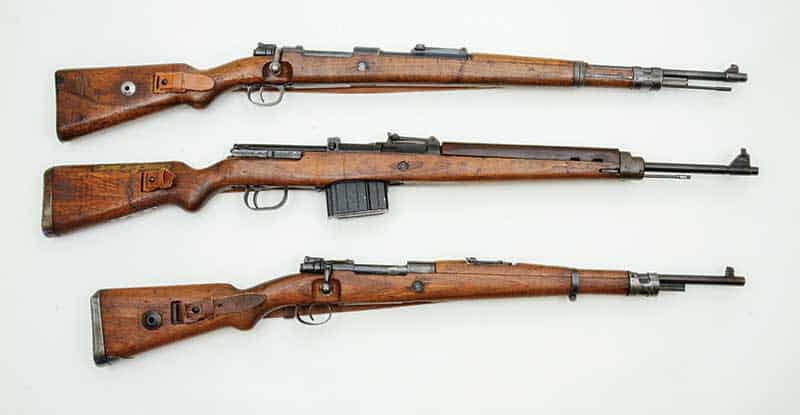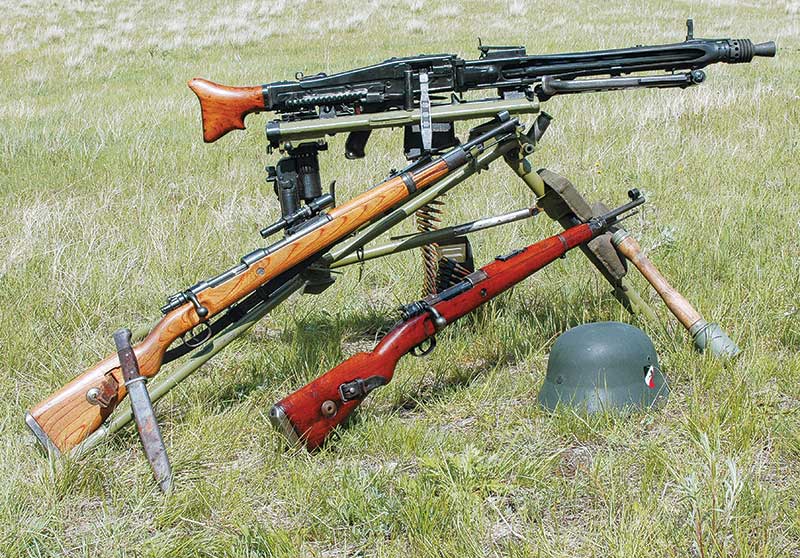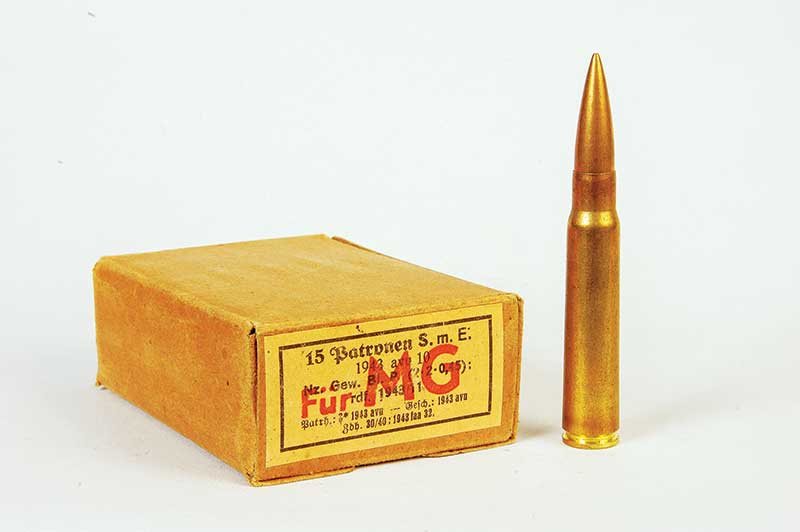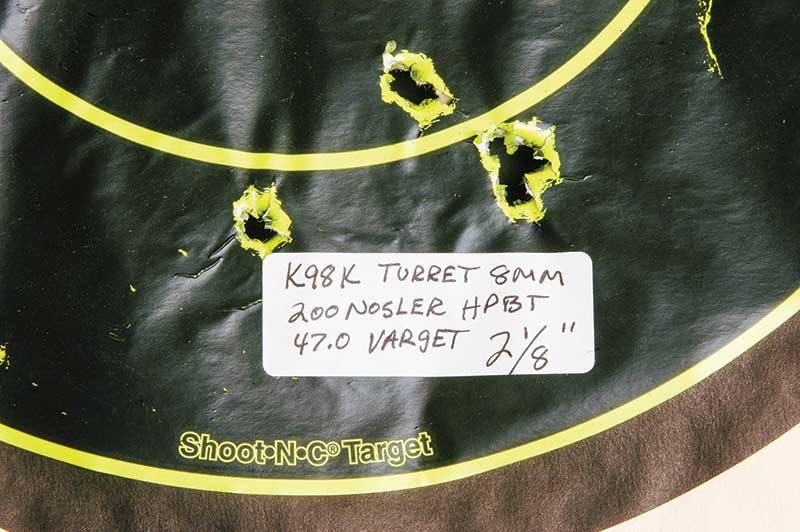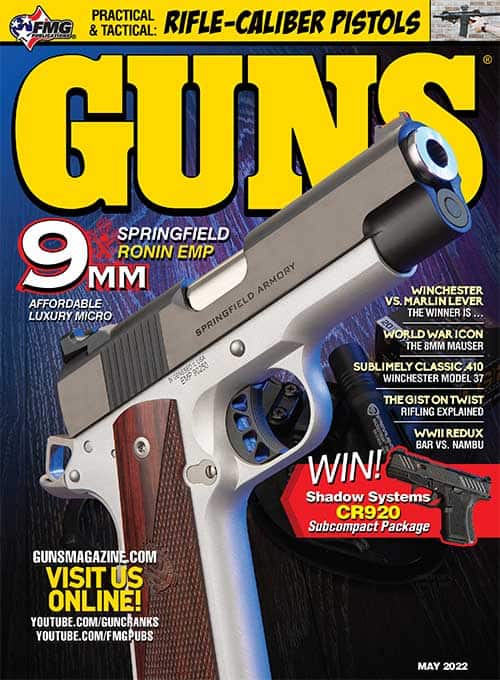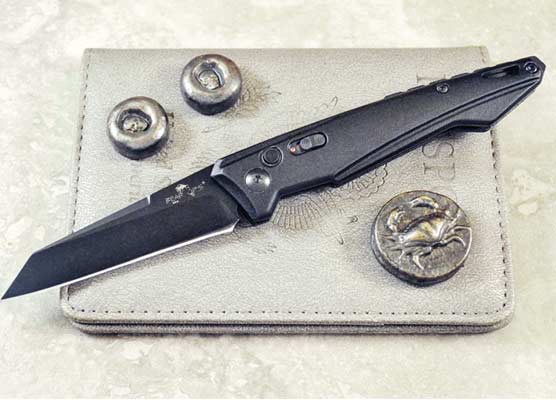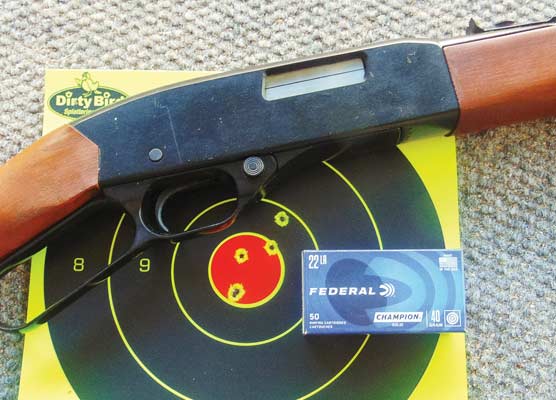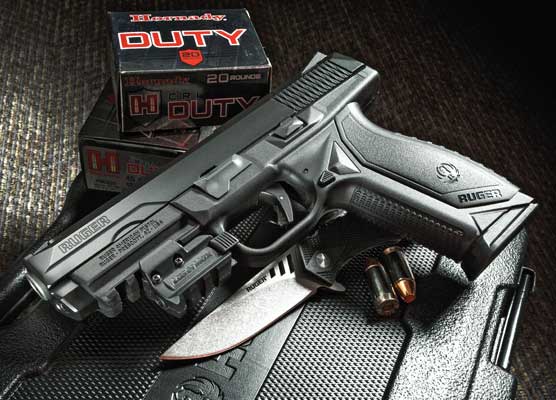The 8mm Mauser
A rose — or cartridge — by any other name
By my memory I had never fired any rifle chambered for 8mm Mauser until beginning my World War II firearms collection early in this century. Now I can say I’ve fired literally thousands of 8mm Mauser rounds including commercial factory, military surplus and my own handloads. They have been put through a large variety of firearms ranging from carbines to machine guns. I’ve come to respect the cartridge just as much as our .30-06 and far more than any other World War II military cartridge.
As with the average American rifleman, there was much I did not know or misunderstood about the 8x57mm, such that it didn’t originate as a Mauser cartridge. The 8x57mm was actually developed by the German military for their Gewehr 1888 infantry rifle, which itself was a variation of a Mannlicher-style bolt action. It wasn’t until Peter Paul Mauser unveiled his Model 1898 rifle that the 8x57mm was mated to his rifles.
A New Name
Also, as originally developed and as still known today in Europe, its name is not 8mm. It started as 7.9x57mm, segued to 7.92x57mm and finally here in America, for some reason lost to history, it commercially became the 8mm Mauser. For this article we will stick with 8mm Mauser, otherwise matters might get confusing.
When first introduced, it used a jacketed, round-nose 226-grain bullet. The original barrel groove diameter was 0.318″ and the Germans called it the J-Patrone (meaning J-cartridge). Then in 1905, there came a great change which has influenced military ammunition unto this day — the Germans introduced spitzer (pointed) bullets. Just about every nation producing military ammunition followed suit, including the United States with its mega-famous .30-06.
Again for reasons lost to history, German ordnance people increased their 8mm Mauser barrels to have 0.323″ barrel groove diameters. Such rifles and ammunition were then known as JS-Patrone.
Because military Mauser rifles with the early 0.318″ barrel groove diameters were discontinued circa 1905, they are rare in America. However, some civilian Mauser rifles used the barrel dimension post-1905. It could be dangerous to fire 0.323″ bullets in them so please know what you have before shooting them.
The 8mm Mauser will forever be known to the world in general as Germany’s infantry rifle and machine gun caliber for both world wars. It was also adopted by Poland, Czechoslovakia, Romania, Yugoslavia and even China, just to name a few. It seems ironic when World War II broke out on September 1, 1939, Germany and Poland went at each other with both countries’ armies using 8mm Mauser Model 1898 rifles.
Standard Issue
By the outbreak of World War I in 1914, the standard German infantry rifle was labeled Gewehr 98 meaning “Rifle 1898.” They were turn-bolt-action with a five-round magazine capacity. Barrel length was 29.13″ with overall length of 49.20″ and nominal weight of 9 lbs. Rifling twist rate was one turn in 9.25″. Sights were an inverted V-shape front and notched V-shape open rear graduated to 2,000 meters. Windage was zeroed by moving the dovetailed front sight blade laterally in its stud. With about 5 million Gewehr 98s produced it remained in service with Germany’s greatly reduced post-war army.
By the middle of the 1930s Germany modernized Gewehr 98s into the Karabiner 98K. Its basic mode of function didn’t change but barrel length was reduced to 23.63″, overall length of 42.90″ and weight of 8.6 lbs. By the end of World War II in 1945 the K98k had undergone many changes. Ones produced in the late 1930s could compare with the finish quality of concurrent American sporting rifles such as Winchester’s Model 70. However, by 1945 the level of finish had deteriorated considerably while functionality had not. About 10 million K98ks were made.
One other ’98 Mauser deserves mention — G33/40 made in Czechoslovakia at the BRNO factory. This was a special lightweight adaption of the regular Model 1898. Barrel length was only 19.29″ with overall length of 39.10″ and weight of 7.9 lbs. Extra steps were made to lighten G33/40s such as hollow bolt knobs and cutouts in the action because their intended purpose was for Gebirgstruppen (mountain troops). Because they might also be used as “walking sticks” when crossing snow and ice, a steel-protecting plate was put on the buttstock. Only about a quarter million G33/40s were produced.
A Fine Madness Begins
At the beginning of this century, I was standing in a Montana gun show feeling sort of left out. Every Old West firearm I ever desired I already owned. Gun show fever had me in its grip. There were dollars in my pocket but I was feeling as if there was nothing to spend it on. I stopped in front of a friend’s table to visit and happened to look down at a nice looking Mauser rifle. At that time I wasn’t sure of anything except it was a Model 1898. My friend informed me it was a German K98k made in 1937 with all numbers matching except the bolt. I asked, “Why only the bolt?” The answer was when German troops surrendered to Americans in 1945 they dropped their rifles in one pile and bolts in another. U.S. soldiers could rummage through them until a bolt fit into a rifle and then bring it home.
Always a student of World War II history, I was intrigued by that. Also attractive was the rifle’s price — a fraction of what Old West guns were selling for. That lit a fire under me that burns unto this day. It didn’t hurt the K98k shot very well once I figured out 8mm Mauser reloading details. By 1937 Germany had gone from 154 spitzer bullets at about 2,800 fps to 198-grain ones at about 2,500 fps. Duplicating those ballistics had my K98k hitting on at 300 meters.
Inventory
Now my collection not only contains the first K98k but it has five scope-sighted German sniper rifles from World War II. Four are K98s with various scopes and one is a K43 which was Germany’s attempt to field a semi-auto to compete with America’s M1 Garand and the Soviet Union’s SVT40 Tokarov. Obviously K43s were too little and too late to help change Nazi Germany’s fate. Also in my collection is a G33/40. These are fairly rare nowadays because they have been sought out by custom rifle builders in order to use their exquisite-quality actions as basis for expensive sporting rifles. They have quite a bark and bite with 198- to 200-grain bullets that they push at about 2,400 fps. Also along the way I’ve been fortunate to fire a friend’s MG42 with its amazing cyclic rate of fire of 1,200 rounds per minute. It actually sounds like a buzz saw.
Along the way I bought a very nice German ’98 8mm sporter built between the World Wars. It was a beautifully crafted hunting rifle complete with double set triggers. Sadly it came to me after physical ailments ended my hunting career and was sold to a friend who still hunts. By the way, the same friend and I took one of my 8mm sniper rifles to a CMP 300- and 600-yard event in 2011 and finished fourth of 25 teams.
Space won’t allow me to go into the myriad details of 8mm Mauser reloading. However, my standard load for all consists of any 0.323″ bullet of 195 to 200 grains over 47 grains of Hodgdon’s Varget.
More info is in my book Shooting World War II Small Arms available on Amazon.
